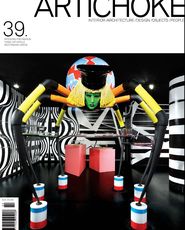Ethics and design go hand in hand. As a way of thinking, as a creative process, and even as a finished object, design is about what we value and how we express those values through the objects and spaces that make up our culture. Ethics, too, encompasses far more than the difference between right and wrong; ethics is about how we determine what to value, and how we negotiate conflicting values among the practical choices that make up our everyday lives. Design and ethics are therefore closely connected. And when we introduce the problem of sustainability, we design an ethics connecting personal and commercial choices to the world they make – the world from which they emerge, and to which they will ultimately return.
Design thinking offers the maker a powerful set of problem-solving tools. To arrive at a resolution, the designer takes agile steps between researching and sketching, prototyping and experimenting, analysing and synthesizing. These steps are informed by a deep engagement with material life cycles, user behaviours, and cultural and commercial contexts. In these ways, design thinking is its own ethics, oriented as it is to making fine distinctions among an array of values in complex interrelationships. Yet all of this research and development will have been for nought if, as consumers, we are unable to exercise a little design thinking of our own.
Ethical consumption means understanding that we’re buying into the future of this product, and that means understanding its past. Where did it come from? What problems does it address and which ones does it solve? How were its materials developed, and what are they? Do we know how to recognize them? What impact on the environment has already been created by the time we can hold it in our hands? How will we use it, when, and for how long? And then what will happen to it?
Each consumer choice we make is the result of an ethical judgement, and in making those judgements, we are designing our own ethics of consumption one step at a time. We are deciding between valuing sustainable or mass production, fine craft or worker exploitation, local origins or global transportation, along with a host of other factors. To engage seriously with the notion of consumer sovereignty, we need to also understand ourselves as governing the sprawling landscape whose health our choices affect; there’s no reign without responsibility.
How does our every personal choice connect with the land, the community, the world? We often hear good sustainable design described as utilitarian, suggesting an easy functionality, but as a philosophy utilitarianism holds that the good is what generates the greatest happiness for the greatest number. Jeremy Bentham’s eighteenth-century theory seems to be common sense, but can we really project what makes us happy into what would make everybody happy?
In the same era, Immanuel Kant argued that we should make choices according to values we’d like to see become universal laws – the categorical imperative. Yet while Kant reverses Bentham’s ends, seemingly justifying the means, the cultural generalization remains. Centuries of theory to follow debated social contracts between individuals and the state, or existential versus authentic approaches to modern life. It wasn’t until in the twentieth century Michel Foucault’s concept of the care for the self suggested a return to Aristotelian virtue ethics, with its focus on the formation of character via the cultural apprenticeship of behaviours and techniques.
Each approach yields a complex set of questions that remain open; while our consumption ethic might be unclear to us, it’s happening in each consumer choice we make. Globalization might be about mass media convergence and worldwide climate change, but our increasing interconnectedness is created by the real and practical impacts of large numbers of individual choices. The DIA’s code of ethics states: “A designer accepts a professional obligation to further the social and aesthetic standards of the community.” As consumers, we reset those standards with every choice we make. There can be no ethical design without ethical consumption.
Becoming aware of this is the first step towards becoming a values-driven consumer. Just as the hand of the maker creates a recognizable identity that is enriched over time, so too do our individual choices become the markers of the world we choose to value and sustain.














